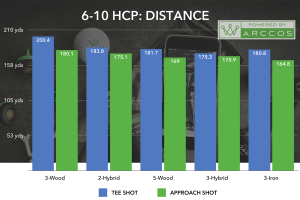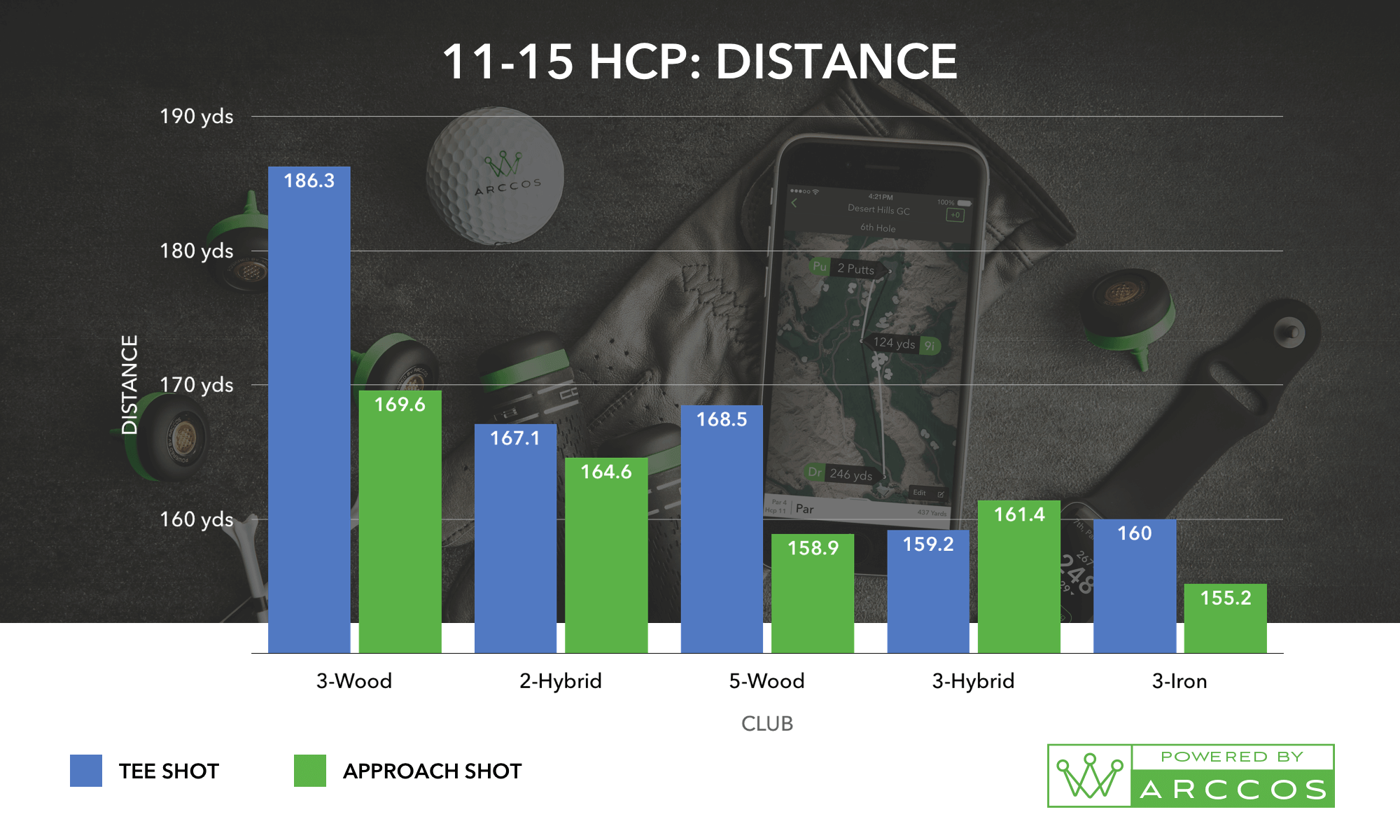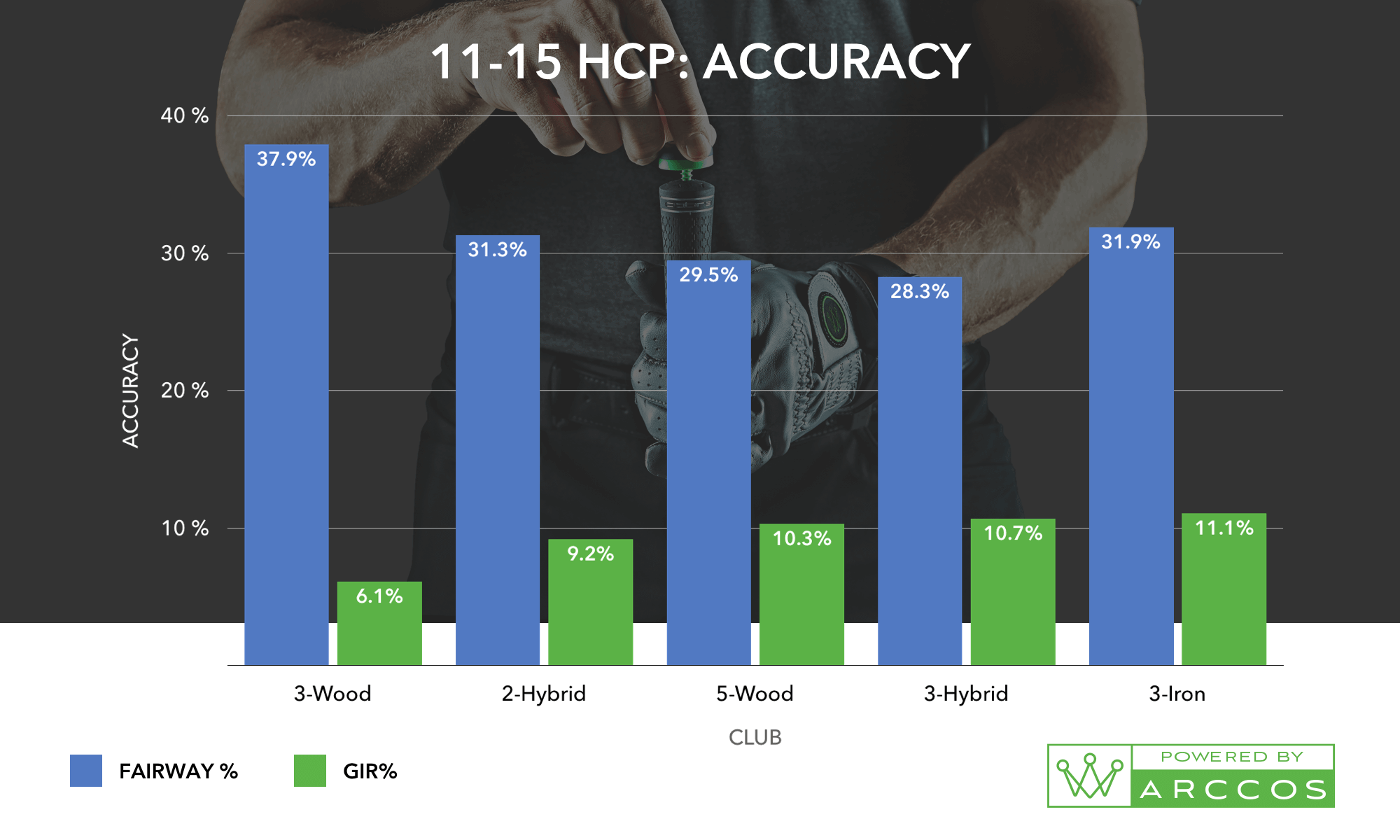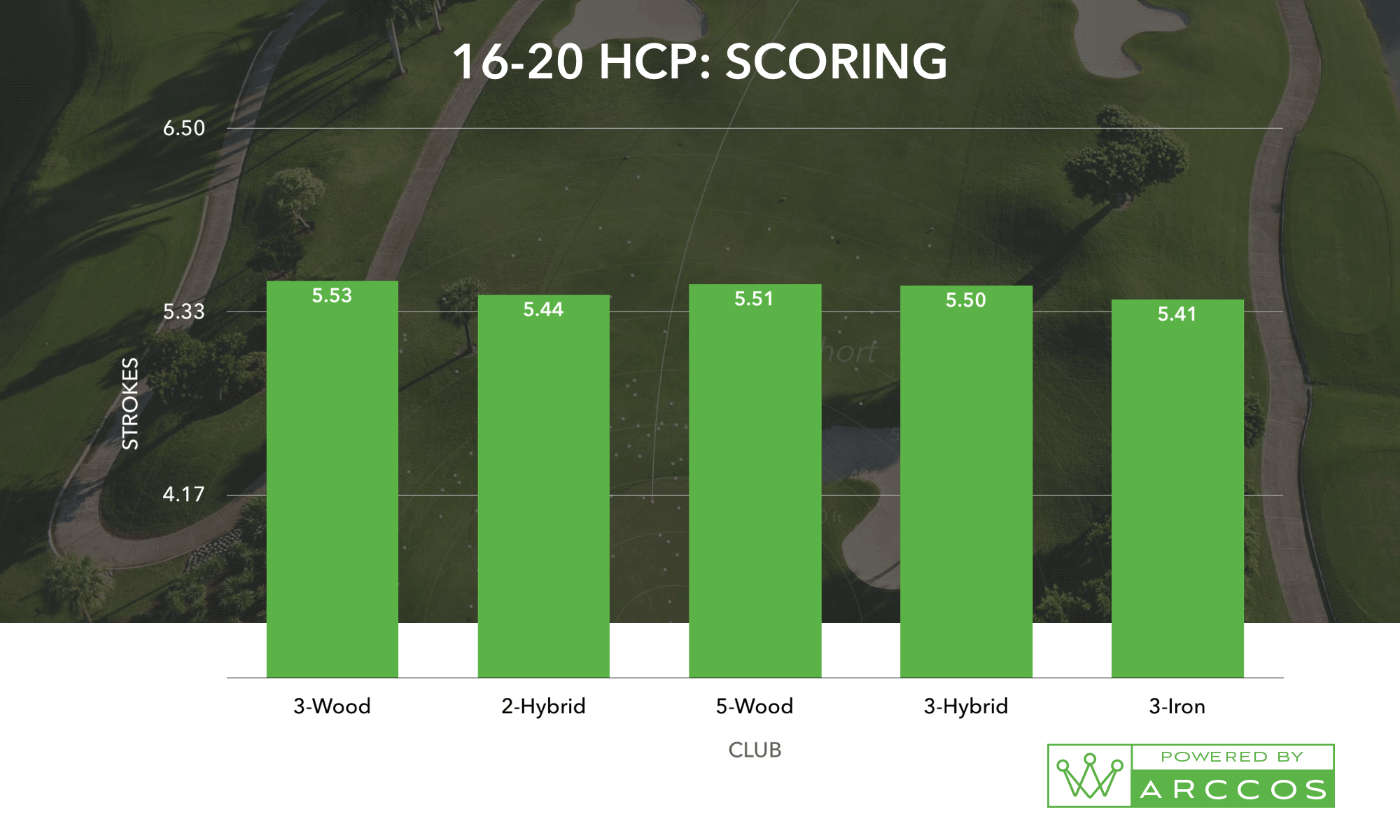Bag makeup is personal – there are no rules that say you have to carry a certain combination of clubs. The selection of 14 clubs is one of the few things over which golfers actually have total control. So how can amateur players make the most informed decisions?
Data.
Arccos users can look at individual club data and analyze their entire bag makeup to find weaknesses. With precise shot data available for every club, Arccos users can:
- See how often they’re using each club
- Know how it’s performing relative to the rest of their bag
- Easily compare data between new clubs and old clubs when tinkering with a different setup
Our last data collaboration with Arccos pitted the 4-iron against the 4-hybrid. Using the Arccos database of 100+ million shots taken during 1.6+ million rounds, we expanded our analysis to include all long clubs: 3-wood, 5-wood, 2-hybrid, 3-hybrid, and 3-iron. The information below is grouped by handicap bracket. In each section, you’ll see how each club performs on average in five categories for golfers of different skill sets: drive shot distance, approach shot distance, fairway hit percentage, greens in regulation percentage and average score when using as tee club.
0-5 Handicap
With clubs ranging from 3-wood to 3-iron, even the best players in our study have trouble achieving the same distance totals on approach shots compared to tee shots. There’s a large gap for all five clubs. On approach shots, the 5-wood, 3-hybrid, and 3-iron all travel almost identical distances (~175 yards) for the players in this group, but off the tee, the 3-iron has a distinct advantage among those three clubs. The data also shows an increase in fairway hit percentage with the 3-iron when compared to the 5-wood and 3-hybrid. (Yes, there are people out there that actually can find the sweet spot on a 3-iron!) If you’re one of these better players, consider dusting off the 3-iron and putting it in the bag.
6-10 Handicap
Players in the 6-10 handicap bracket show relatively minimal differences between tee and approach distances for both the 2 and 3-hybrids. Focusing on the 3-hybrid, it’s interesting that this club has the lowest fairway hit percentage for this group of players. Several comments in the 4-iron vs. 4-hybrid piece noted that as single-digit players, hybrids are often too easy to hook off the tee. That holds true here as the 3-hybrid sits five percentage points behind the 3-iron for fairways hit. This group features players who most likely are trying to break 80 more often – being smart about hybrid usage could make that goal a reality.
11-15 handicap
As with our previous group, this group also hits hybrids close to the same distance off the tee and on approach shots. For both the 2 and 3-hybrids, distance differences are only about three yards between tee shot and approach shots. The most significant gap between tee shots and approach shots is found with the 3-wood, while, not surprisingly, the 3-iron is the shortest club for approach shots overall.
Armed with this knowledge, golfers in this handicap bracket can focus on improving these shots during practice sessions or avoid them on the course. Overall, when you factor in distance and accuracy, the 2-hybrid is a solid play for this group. It has a steady fairway hit percentage combined with consistent distances off the tee and on approaches, with the added kicker of the lowest average score when used as a tee club.
16-20 Handicap
For the first time, this group sees several clubs with longer distances on approach shots compared to tee shots. The 2-hybrid and 3-hybrid gain five and six yards, respectively, on approaches. In general, the 2-hybrid through 3-iron clubs perform very similarly. For the most part, they are only separated by a few yards off the tee and a few percentage points for fairway percentage. This runs counter-intuitive to the thought that higher handicap players should ditch the 3-wood in favor of hybrids. As a fairway finder, the 3-wood is the clear champ.
20+ handicap
For these players, the 2-hybrid and 3-hybrid gain about 5 and 9 yards on approaches compared with shots taken off the tee. For every other handicap bracket, the 3-wood is the clear winner in fairway hit percentage, but in the 20+ bracket, the 2-hybrid is close to surpassing the 3-wood. It only falls about 2.5% behind. For approach shots, the 2-hybrid travels one yard farther and hits the green about 2.5% more often.
Actionable Insights
Finding the right bag makeup for your game is simple: The more you play with Arccos, the more data you have at your disposal, the more informed decisions you can make. The answer, as always, lies in the data.
Use the data we provide as well to get the most popular products for your game, even consider using our buyer’s guides to up your game the right way!





























Jeroen Goudswaard
3 years ago
I was just checking my driving distance on Garmin (I am a hcp 15). With 93 mph driver swing speed, my average distance is 208, my 75 percentile (or expected) is 228 and my longest 5% are 249 on average. This is the average of some 40 rounds played, winter and summer. So the 0-5 hcp that only hits the 4-iron 170 could hit it 20% further on his best hit. Or 205. That would make sense.